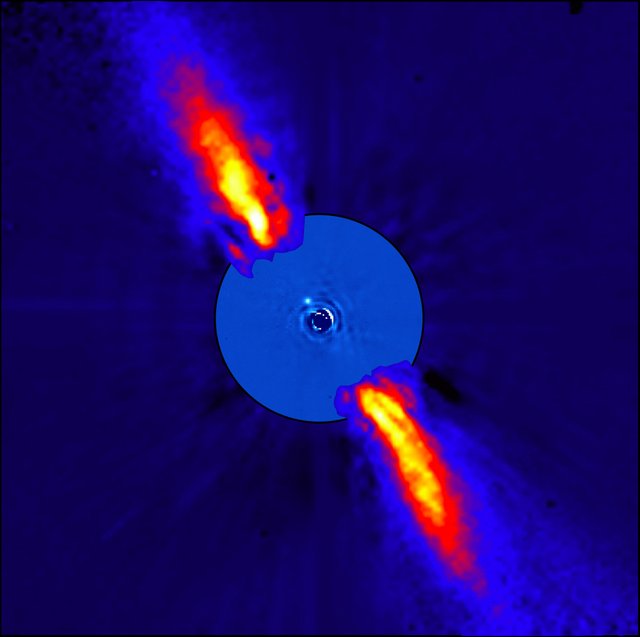Lesson .
.Planet Pinpointer: A 'Pi in the Sky' Math Challenge
Overview
The "Pi in the Sky" math challenge gives students a chance to find solutions to real-world problems all while using math and pi just like NASA scientists and engineers. In this problem from the seventh installment of the set, students use the mathematical constant pi to calculate the distance across a disk of debris around the star Beta Pictoris.
Materials
- Pi in the Sky 7: Planet Pinpointer – Download PDF
- Pi in the Sky 7: Planet Pinpointer answer key - Download PDF (also available as a text-only doc)
Background

Our galaxy contains billions of stars, many of which are likely home to exoplanets – planets outside our solar system. So how do scientists decide where to look for these worlds? Using data gathered by NASA's Spitzer Space Telescope, researchers found that they're more likely to find giant exoplanets around young stars surrounded by debris disks, which are made up of material similar to what's found in the asteroid belt and Kuiper Belt in our solar system. Sure enough, after discovering a debris disk around the star Beta Pictoris, researchers later confirmed that it is home to at least two giant exoplanets. Learning more about Beta Pictoris' debris disk could give scientists insight into the formation of these giant worlds. In Planet Pinpointer, put yourself in the role of a NASA scientist to learn more about Beta Pictoris' debris disk, using pi to calculate the distance across it.
Procedures
Planet Pinpointer
Our galaxy contains billions of stars, most of which are likely home to exoplanets – planets outside our solar system. How do scientists decide where to look for these worlds? Researchers looking at data from NASA's Spitzer Space Telescope found that giant exoplanets tend to exist around young stars surrounded by a disk of debris. A prominent debris disk around the star Beta Pictoris, which is 6 x 1014 km away from Earth, led scientists to discover two exoplanets several times bigger than Jupiter orbiting the star! Learning more about the debris disk could give scientists insight into the formation of these giant worlds.
Given the angle of the disk's apparent size is 169 arcseconds, determine the actual distance across it using the formula for small angle approximation, below. (An arcsecond is 1/3,600 of a degree.)
D = dθ D = distance across the debris disk (km) d = distance to Beta Pictoris (km) θ = angle of apparent size (radians)
Assessment
Extensions
Participate
Join the conversation and share your Pi Day Challenge answers with @NASAJPL_Edu on social media using the hashtag #NASAPiDayChallenge
Blogs and Features
Related Lessons for Educators
Related Activities for Students
Multimedia
Facts and Figures
Missions and Instruments
Websites
Lesson Last Updated: June 20, 2025










